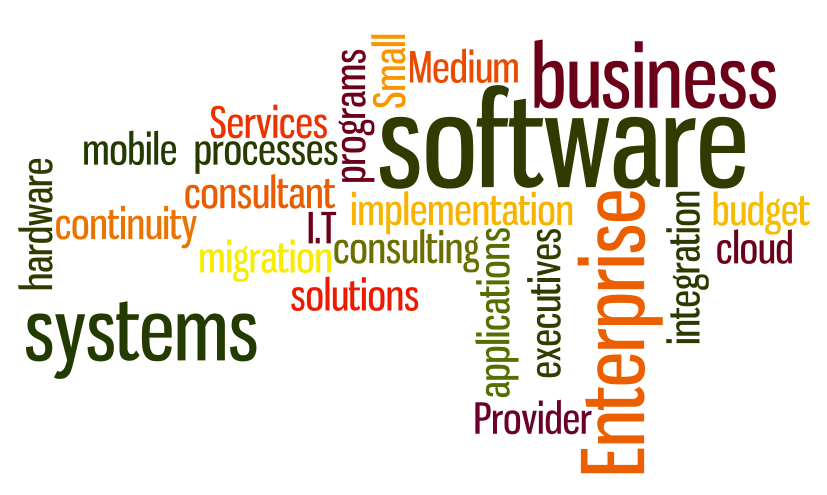Last Updated on December 13, 2022 by Tatyana Vandich
IT services and IT providers are terms that are very popular in the IT market. It actually became even more popular with the evolution of the cloud. For many business owners and executives, the term “IT provider” is associated with a dollar sign and a negative connotation. However, in the past few years, IT services have become less expensive even though the added value has increased. More and more business managers are realizing the importance and value of a good IT provider and their business solutions, as they have the potential to improve a business process and streamline daily operations.
 In this article, I will address the important signs and symptoms that a small and mid-size enterprise should look for when considering to invest in IT services. Most of the time, business owners and executives get too comfortable with their existing system that they do not realize their business processes can be simplified to allow their business to grow and their employees to work more efficiently. Before getting started with any IT provider (or IT consultant) there are questions that every executive should raise. To get a list of these questions, please visit Stephanie’s Valentine’s Day special blog Questions you should always ask before dating an IT provider.
In this article, I will address the important signs and symptoms that a small and mid-size enterprise should look for when considering to invest in IT services. Most of the time, business owners and executives get too comfortable with their existing system that they do not realize their business processes can be simplified to allow their business to grow and their employees to work more efficiently. Before getting started with any IT provider (or IT consultant) there are questions that every executive should raise. To get a list of these questions, please visit Stephanie’s Valentine’s Day special blog Questions you should always ask before dating an IT provider.
What are IT services?
IT services are any product or service offered by an Information technology service provider such as IT consulting, software systems and programs, managed services or hardware infrastructure. In other words, any activity, service or product that needs the help and assistance of information technology professionals in order to initiate and make it happen.
Signs to invest in IT services
Following are some important signs that are a good indication for executives and owners within an enterprise to seriously consider investing in their IT infrastructure:
1 – Great amount of manual work
In the small and mid-size enterprises where IT is not exploited at its fullest, we have noticed that the amount of labour time and effort consumed to perform a task is extraordinary. Instead of leveraging technology to reduce the time and effort to complete jobs and processes that can be done using IT, lots of companies choose the “easiest” path which is to hire more human resources to do more manual work, with all its expenses and inefficiencies. With time, this behaviour becomes part of the culture in the company and is repeatedly executed without any further questioning. This is the first sign that executives should dig deep and evaluate how IT services could help improve their business.
2 – Too much paper work
We have seen too many situations where companies do not have any software system running their day-to-day operations. There is no doubt in my mind that in order for such companies to prosper and move to the next level, they need to be ready to invest in IT and stop using so much paper work and manual labour to run their day-to-day operations. As hard as it is to believe that in this day and age many businesses do not run on fully integrated software systems, it is true. Therefore, as soon as you realize that you depend too much on paper work, it is time to invest in IT software, hardware or cloud services.
3 – Old hardware platform
Many companies have already invested in their IT infrastructure and hardware platform. However, this could have been many years ago and they have not upgraded their platform ever since. As important as it is to have a good IT infrastructure, it is even more important to upgrade it continuously. In general, the life cycle of hardware equipment is 3 to 4 years. Therefore, keeping a platform without any upgrade for a period of 5 years or more is a good sign that a business needs to allocate a budget and invest on IT and hardware platforms.

4 – Out-dated software programs
My team and I have seen a lot of situations where companies still have in place out-dated legacy software systems running their day-to-day operations. They did not keep their system current on maintenance and support for many reasons, such as their vendor does not exist anymore, cost of maintenance is very high, or they have stopped paying for support and maintenance and therefore do not get any updates from the vendor. To work around these gaps in the system they now have, these businesses began building many mini-systems internally based on Excel spreadsheets, Word documents and other types of files to fill the missing gaps created by their out-dated software application.
When an executive looks around and sees that most of the business’ day-to-day processes are built in Excel and Word and not properly and securely documented in a unified software application built specifically for that purpose, it is a sign that the business is in need of a fully integrated software solution. In my previous article, See What It Means To Be Fully Integrated with an Efficient Business Software Solution, I have put an extraordinary amount of information about integrated software solutions. Please take a look to learn more about this important topic.
5 – Poor business continuity and backup strategy
Up until today, there is a great misunderstanding of the difference between business continuity and backup recovery policy within the small and mid-sized enterprises. Most of the companies I have seen firmly believe that they have a functioning backup policy that allows them to get back on track quickly and within a record time if disaster strikes. Their assumptions are primarily based on incorrect facts as they believe their backup drive or tape is their business continuity or “failover” plan. From my past experiences with SMEs, traditional backups weren’t as safe and reliable as once believed and data was not properly saved on these drives or tapes. Any company that is not fully ready for any disaster and does not have the proper recovery system in place should take it as a sign to invest further in IT services for backup. On that topic, I invite you to read my article The Main Differences between Data Backup and Business Continuity that explains the difference between backup and business continuity.
Is investment on IT services worth it?
In this article, I have highlighted the important signs to look for when determining if a business should invest in IT services. Certainly, there are more signs to look for, however these are the basic ones that are easiest to detect. As far as a return on investment is for IT services, it is clear that the return will be apparent with the efficiencies and improvements in day-to-day operations. Therefore, the next time you take a closer look at how your business is being run, consider these 5 signs. If you need further help in determining how to reduce your investment and risk, simply contact our team and I will be happy to give you a FREE consultation myself.



